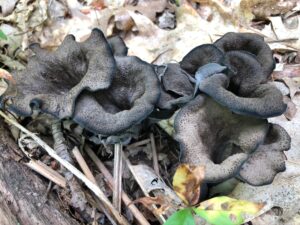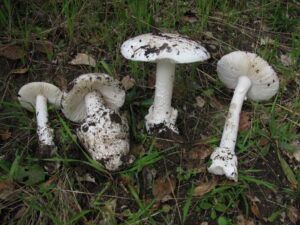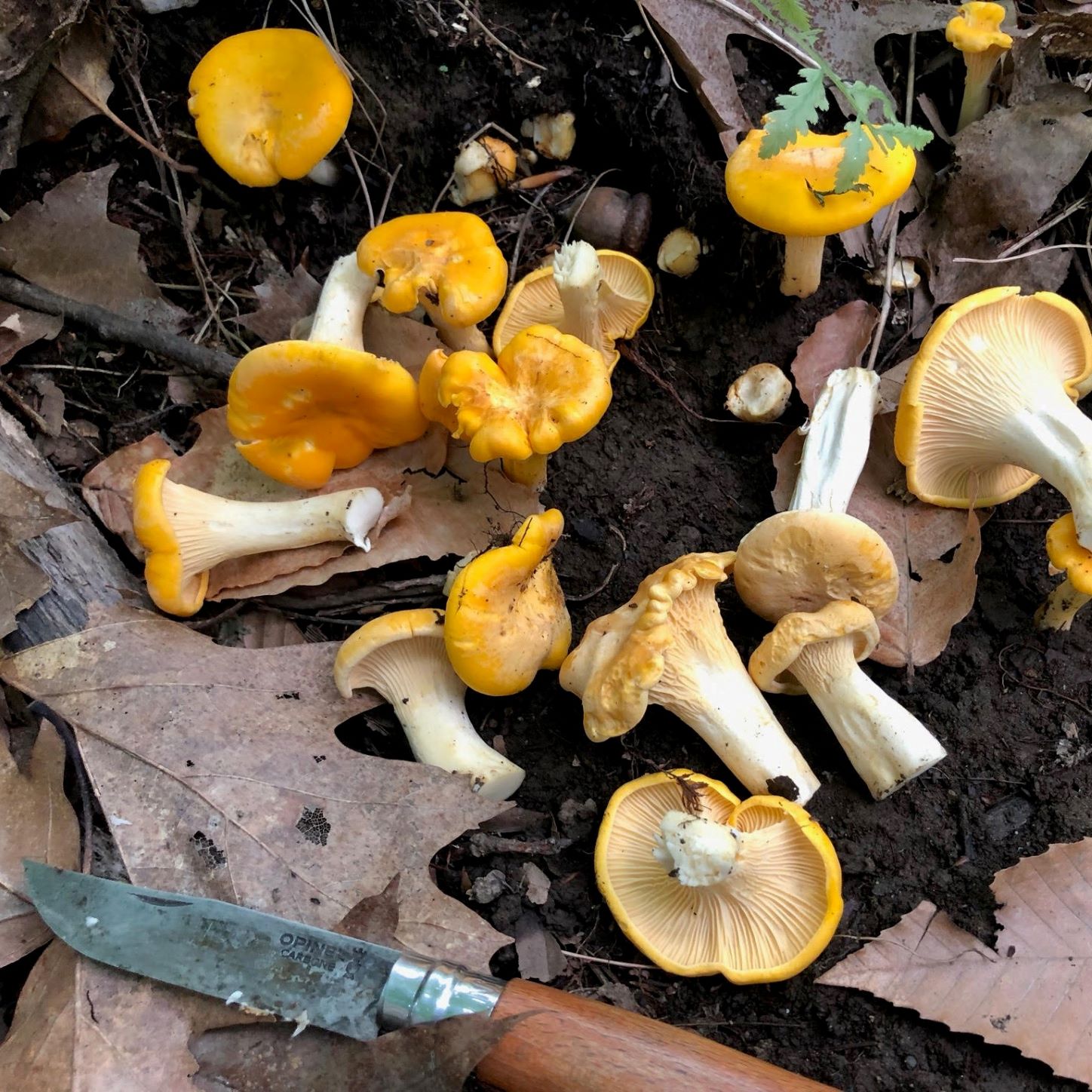September 9, 2021: The Magic of Mushrooms

Black Trumpet Mushrooms Photo Credit: Greg Marley
I have noticed that nothing sparks people’s curiosity on a nature hike as much as a mushroom. They offer a splash of color among the browns of the forest floor or decaying wood, and come in a variety of surprising shapes and sizes. Mushrooms can be deadly poisonous or delicious to eat, depending on the species. They are a mysterious, magical, and a sometimes-frustrating organism. Becoming a mushroom expert is a lifetime pursuit, as proper identification can be tricky to say the least.
Mushrooms are part of the fungus kingdom, and are the fleshy, reproductive body of a fungus, typically produced above ground, on soil, or on its food source. The majority of the fungus is found underground, where it spreads through threadlike structures called mycelium. It isn’t your imagination that mushrooms seemingly pop up overnight. Mushrooms do take several days to form their fruit bodies, but after that they absorb water rapidly, sometimes greatly expanding their size in just a few hours. This rapid expansion in size and scope is where we get the expression “to mushroom” or “mushrooming”.

Destroying Angel Mushroom
Though the spore bearing mushroom is short-lived, the underlying mycelium itself can be long-lived and massive, spreading throughout the forest floor and forming a vast, branching fungal network. More than 90% of plant species in the forest and fields around us are in a symbiotic relationship with the mycelium, where nutrient and water absorption capabilities are shared and protection against pathogens is increased. The symbiotic relationships between fungi and plants are known as mycorrhizae.
Late summer and early fall are a great time to look for mushrooms locally. If your looking to see a variety of mushrooms, head out after a rainstorm, with a soggy forest being a good place to start. The species of mushroom you find will have everything to do with the surrounding habitat, with some fungi forming relationships with deciduous trees and others with conifers. If you learn to identify trees, this will help you identify mushrooms.

Mycologist Greg Marley Photo Credit: Greg Marley
If you are interested in eating mushrooms, positive identification is key. There are about 40 species of mushrooms in Maine that are commonly collected and eaten. Unless you know what you are doing, DO NOT eat mushrooms unless you are forging with an expert. If you make a mistake in identification, you may experience gastrointestinal distress or a mind-bending experience, or even death. One extremely common mushroom in Maine is the Destroying Angel, and you only need to eat one for the results to be fatal.
Lucky for us, we do have some regional mushroom experts, and Boothbay Region Land Trust is proud to host the renowned Greg Marley on September 25th at 9 AM at our Oak Point Farm headquarters (group size limited and registration is required by emailing thall@bbrlt.org). Greg will lead us on an exploration of fungal ecology, edibility, toxicity and the wonder of mushrooms during a walk in the woods. Greg has been collecting, studying, eating, growing and teaching about mushrooms for over 45 years.
So next time you are in the woods and see an intriguing mushroom, take the time to look a little closer and get to know it. Learn more by acquainting yourself with online mushroom identification sites and mushroom field guides. Talk to experts at a local farmers market, a land trust. or join a mycological club. Always identify species through a variety of sources and be thoroughly convinced with the identification before eating a wild mushroom. Be patient as your knowledge grows, and you will be rewarded with a true delicacy.




